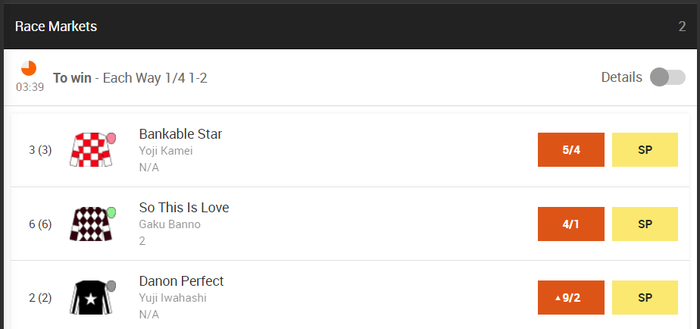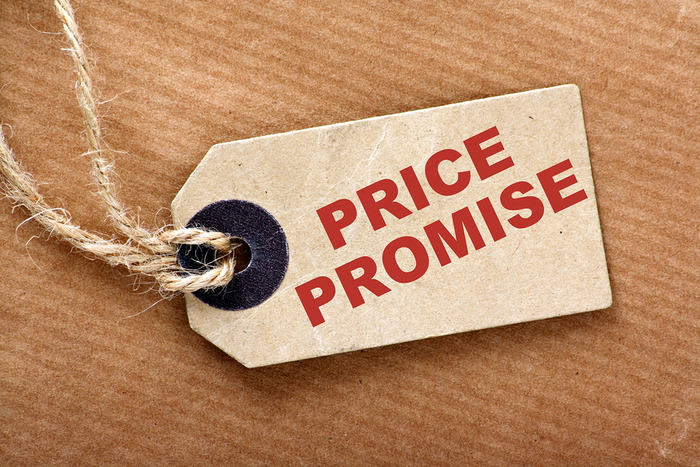 The Starting Price, or SP, as it’s more commonly known, is the price assigned to a horse or a dog at the start of the race and is calculated by using the odds of various on-course bookmakers, as well as other agents including the Press Association and the various betting exchanges.
The Starting Price, or SP, as it’s more commonly known, is the price assigned to a horse or a dog at the start of the race and is calculated by using the odds of various on-course bookmakers, as well as other agents including the Press Association and the various betting exchanges.
These are effectively the official odds for the race and contrast with the earlier prices that were available on the different horses or dogs before the race began. When placing a standard bet on the day of a race, or at least once the live odds (as opposed to the ante post odds) have been published, you are often given a choice between accepting the current odds, known as “taking the price” or opting for the SP.
Fluctuating Prices

In the build up to the race, especially in the final minutes before it starts, the odds can fluctuate wildly. This is a reaction to the market – so large bets on a horse reduce its odds – or a reaction to changing conditions, for example the weather or the appearance of the animal. For example if a horse is sweating up and looking jittery the odds may lengthen, although in truth this too is really a market reaction as punters lay that horse on the exchanges and bet on other horses too.
Around 10 minutes before a race, the odds offered switch from the early prices produced by the bookmakers individually, to the board or show price, produced collectively by the bookmakers at that course. Quite often you will see a sudden change in the odds available at that point.
How Much do Odds Vary?
 Horse racing is the sport where you generally see the biggest fluctuations in odds. This is because there are so many factors as to why a horse might be favoured or in our example below, unpopular.
Horse racing is the sport where you generally see the biggest fluctuations in odds. This is because there are so many factors as to why a horse might be favoured or in our example below, unpopular.
In a race at Royal Ascot, Order of Australia was hotly tipped to do well and whilst not favourite, was priced strongly as low as 8. Since then, he’s drifted to 16.5, which is over a 100% increase in price.
There are a couple of reasons why this is. The first is that the odds on favourite, Palace Pier, is in incredible form and the ground is only improving to suit him more. The second is again, the ground, but this time, it’s not as favourable as it quickens up.
For this horse race, the price looks to be heading in one direction (up) so it would make sense to take the starting price or at least hold until nearer to the start of the race to monitor any fluctuations.
Benefitting From Changing Odds

Shrewd punters can secure a win from odds that are constantly moving, even before the bet has started. As you can see from the example above, the odds on the selection have moved significantly and with that creates opportunities using tools like betting exchange.
What punters can do is either bet when the price is high and lay when it shortens, or they lay when its low and back when it drifts.
Knowing when to do it and what bets to target is an art. The biggest margins are almost always with horse racing, so you need to be able to soak up as much knowledge as possible on the race and your pick to get the biggest returns.
It’s usually easier to target bets that are overpriced to start with. So, if you think a horse priced at 10/1 should really be a 7/1 shot, it would be a good time to bet. You don’t even need for the horse to win, you just need the market to react to the same information that you have and for the price to then shorten as a result.
Should you Take the Starting Price?

When you place your bet you have a choice – take the price or go for the Starting Price. In theory whichever you opt for might be the wrong one, because the SP could be higher or lower than the price at the time you place your bet. Choose the wrong one and you could find yourself missing out on the better odds.
Best Odds Guaranteed

Most decent betting sites offer some form of Best Odds Guaranteed on both greyhound and horse racing. We do into it in more detail in the specific BOG article, but put simply you are guaranteed the better of the two odds when you take a price. So if the odds drift and the SP is higher than the price you took, you’ll receive the SP. But if the odds shorten and the starting price ends up being smaller than your price, you’ll still receive the price you originally took.
Clearly the use of BOG removes the issue of whether or not to take the SP as it is always better to take a price if Best Odds Guaranteed is on offer. Most track side bookies don’t offer BOG though, so if you’re betting at the meeting – or for some bizarre reason at an online bookie who doesn’t offer it – you’ll have to make a decision on whether to take a price or gamble on the SP.
How Is SP Calculated if there are No On-Course Bookies?

Traditionally the starting price would be generated by the on-course bookmaker and would be set as soon as the race started. However, there have been circumstances where a lot of racing has been conducted behind closed doors, meaning there are no bookmakers on site to set the SP. This has then been given to the online bookmakers to form this price in their absence.
However, there has been some controversy because of this. A study performed by the Horseracing Bettors Forum (HBF) showed that since starting prices were created by off course bookmakers, the value in these bets had decreased by almost 3%.
In terms of the overall market and margin that was averaged per race, this number had dropped, but when they took the starting price for the favourite and second favourite from a sample of around 1,000 races, the margins had increased.
From a legal standpoint the bookmakers have done nothing wrong. The odds are checked and regulated by the Starting Price Regulatory Commission and are within any margins. But there is no doubt that, whilst overall the punter is getting better value for money from the field, for starting price bets on favourites and second favourites, the value has decreased when bookmakers are not allowed trackside.
